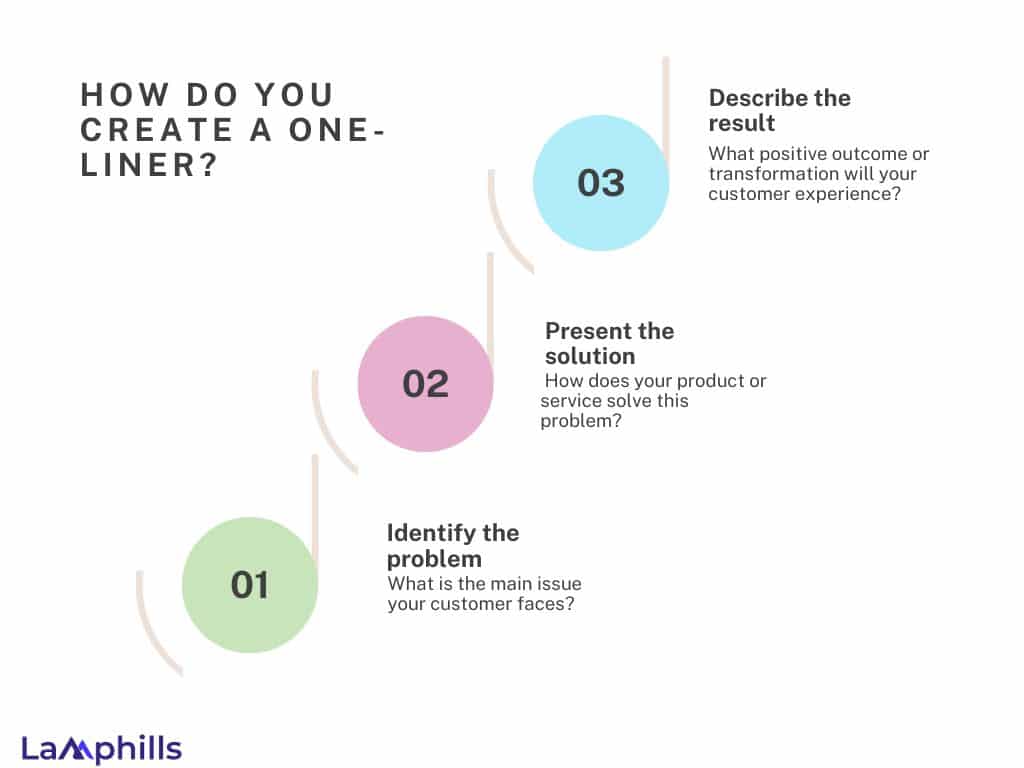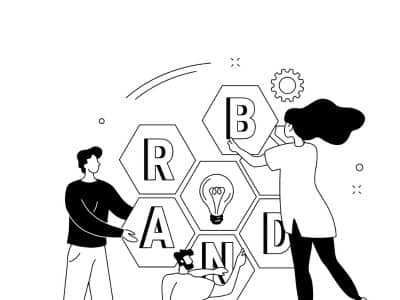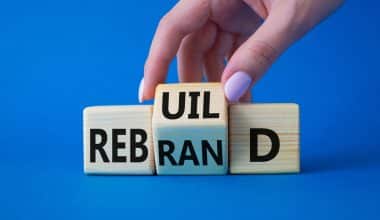A memorable one-liner that captures the essence of the services a company offers its clients is crucial for brand promotion. Using Donald Miller’s story brand framework, it becomes easier for businesses to discover the message they should be presenting and ensure that it inspires their target populace into action. The formula is simple: identify a problem, offer a solution, and explain the positive outcome. Here are some of the best StoryBrand one-liner examples to inspire your messaging while providing tips on how to come up with your one-liners: The One-Liner has a simple and powerful format: “This is what our brand does ” The statement includes the fundamental points and shows the advantage of choosing your brand to the target audience.
Key Points
- A memorable one-liner is essential for brand promotion, effectively summarizing the company’s services and inspiring action from the target audience.
- Utilizing Donald Miller’s StoryBrand framework helps businesses identify their core message by focusing on a problem, providing a solution, and highlighting the positive outcome for clients.
- A StoryBrand one-liner succinctly conveys what the business does, how it addresses client concerns and the benefits clients will gain, making communication straightforward and impactful.
- A strong one-liner includes three components. They are: identifying the issue the intended audience is facing, presenting the solution the business offers, and describing the transformation or benefits for using the service.
StoryBrand One-Liner
A StoryBrand one-liner is a brief statement that gives an idea of what your business does, how it will address a concern, and what the client will stand to gain from the service. Being strategic, one can use a line or two while talking, on the website, or in any communication about the brand. A StoryBrand one-liner is supposed to simplify your communication so prospective clients can get a picture of who you are and what you can do for them.
A one-liner is created out of the StoryBrand framework by Donald Miller and it follows this setup when the story’s main character is the client. In contrast with the perspective of brand tourism, it is centered on how your offering solves customers’ problems.
For example, Slack’s one-liner could be: From the context above, Slack is a tool that helps team members connect from anywhere to communicate and collaborate effectively.
Furthermore, the StoryBrand one-liner is meant to get people to pay attention, comprehend one’s business, and make them want to act. It benefits organizations in that they’re able to deliver a specific and incredibly poignant message through the clutter.
Key Elements of a StoryBrand One-Liner
A strong StoryBrand one-liner contains three essential elements:
- The Problem: First, determine the key issue that your target consumer must deal with. This gets the listener’s attention because it is in response to addressing the listener’s biggest concern.
- The Solution: In not more than 5 sentences, explain how your product or service solves the problem.
- The Result or Transformation: Justify the customer’s use of the promised solution by outlining its advantages.
It is appropriate at this point to define each of these segments.
#1. The Problem
To construct the StoryBrand one-liner that can define your business, first establish a real-life issue of the target audience. This problem should drive a stake into the hearts of your target market. It has to be simple and close to reality, so that after reading the first two words the potential customer identifies himself/herself. The human attention span is easily captured if the recipient hears a solution to a problem he knows.
For example, if your business sells aesthetically pleasing office chairs, then your one-liner could be in line with a problem like; most working individuals develop back problems resulting from sitting for many hours. To tackle a specific issue goes a long way in establishing that you know your audience’s pains and that your product/service will solve the problem.
Jeff Bezos (Amazon) once said, “If you can’t explain it to a 6-year-old, you don’t understand it yourself.”
This reinforces the idea that your one-liner should be simple and easily understood by anyone.
#2. The Solution
Secondly, you convey the approach your business will deliver to the market.
Here you put how your product or service solves the problem. To rephrase, it should be basic, and straightforward as opposed to confusing. Don’t go into every detail about the issue. Instead, sell the high-level solution to the problem that will appeal to your audience.
Following the previous example, you can extend it thus, “A number of our chairs such as the ergonomic chairs are developed to reduce back pains and ensure proper posture is maintained. ”
Your solution should be as natural as you’ve presented the problem you are solving. Express it in plain language so that anyone who has never heard of your brand will easily understand.
#3. The Result or Transformation
Lastly, sum up your one-liner by giving a brief image of the change that your customer will go through once he patronizes your business.
This part remains important because it speaks to the gains that people enjoy from your product or service. People always need to understand the benefits they derive from something. For instance, when you come up with a one-liner, you may choose to wrap it up like this; “So you can work, in comfort and be at your most productive, all day. ”
Here, what is getting emphasis is the result your customer is interested in—comfort and productivity. The change should be something they like or want, thus showing that your product will transform their lives.
StoryBrand One-Liner Examples
Here are examples of one-liners to help you create yours. These examples adhere to the vivid structure that StoryBrand’s framework is based upon: The definition of the problem, the proposed solution, and the description of an ideal outcome.
#1. Uber:
It’s a seamless ride-hailing app that can be used in minutes with just a single click.
- Problem: Individuals need to have the right means of transport that will enable them to meet their transport needs in the shortest time possible.
- Solution: Uber simplifies mobility by just utilizing the app.
- Result: You do not need to worry about transportation because you get to where you want to be fast.
#2. Kiddies Toy & Clothes Company
”We set out to design safer toys for kids that are friendly to nature hence, allowing your kids to learn and play safely”.
- Problem: Children like to play with toys and wear nice clothes and parents look forward to buying them toys and clothes that are not only safe but also enriched. However, this is often a challenge due to their concern about the type of material and whether it will have any long-term benefits.
- Solution: It explains to parents that they are safe and environmentally friendly products. Equally, it highlights the creativity aspect of the products for their kids.
- Result: Parents are happy when they buy them knowing that they are environmentally friendly products that can facilitate learning and at the same time stimulate the child’s imagination.
#3. HealthyLife Healthcare:
HealthyLife allows you to get in touch with skilled doctors and enables you to take proper care of your health.
- Problem: Healthcare can be complex and overwhelming for many to get the right caregivers and treatment.
- Solution: HealthyLife Healthcare provides a convenient and efficient model to reach out for the professional help of highly skilled doctors and participate in the medical process with a corresponding personal approach.
- Transformation: It provides patients peace of mind to be in charge of their health without the troubles knowing that, they can always get professional help when the need arises.
#4. TechEase IT Solutions:
”TechEase IT Solutions assist small businesses to get organized and protected to expand their business without worrying about technologies. “
- Problem: Technical issues, particularly for small business owners, take their attention away from business development.
- Solution: Evidently, through automation and security services that TechEase offers, business owners can save time on other important activities.
- Results: The business people believe their operations are safe and effective to permit the expansion of their businesses without the influence of technology.
#5. BrightSmile Dental:
BrightSmile dental center provides tender and high-quality services for people of all ages so everyone can have a breathtaking smile”.
- Problem: Parents are always concerned about where to take their children and other family members for dental care without pain.
- Solution: BrightSmile’s vision is to provide the best quality, non-painful dental service for children and adults, helping to turn dental appointments into a comfortable and pleasant experience.
- Results: The patients can leave the clinic with the right dental health and self-confidence to flaunt or interact with an open smile.
#6. EcoSpark Energy Solutions:
EcoSpark Energy offer affordable solar power systems that assist homeowners in cutting their electricity bills as well as their carbon footprint.
- Problem: With high energy bills presently, homeowners want to be less wasteful in their day-to-day lives but are uncertain how.
- Solution: Helping the environment and making a saving at the same time – this is what EcoSpark has to offer to its users.
- Result: People feel liberated when using less energy and paying less bills while at the same time not harming the environment.
Note: Each of these one-liners follows the StoryBrand framework by addressing a problem, offering a solution, and describing a positive transformation. They are simple, easy to understand, and highlight the customer’s needs, making them more effective and relatable.
What is a StoryBrand one-liner?
A StoryBrand One Liner is a concise, two- to three-sentence summary of your company. It is intended to be simple and easy to use. Using this strategy ensures that your message is remembered rather than quickly forgotten.
How do you create a one-liner?

To create a one-liner, follow these simple steps:
- Identify the problem: What is the main issue your customer faces?
- Present the solution: How does your product or service solve this problem?
- Describe the result: What positive outcome or transformation will your customer experience?
PRO TIP:
Keep it clear, concise, and focused on your customer’s needs.
Be simple.
Avoid using more words than are required. Your One Liner should have each word have a purpose. Use fewer words to convey the same message if you can. Your message will be easier to understand and recall if it is concise.
Conclusion
Creating a StoryBrand one-liner helps distill your StoryBrand message into something memorable and easy to absorb that clearly defines who you are, what you do, and for what reason you exist. Proper use of the problem, the solution, and the transformation is useful in creating a one-liner that will get the audience to act as desired.
As I said earlier, the secret of a good one-liner is that they are simple. It should be brief, and concise with little emphasis on the formality other than ensure is all about satisfying the customer’s needs. Apply the StoryBrand formula to your brand, improve and check that the message is tailored towards your audience
By focusing on your brand’s unique value proposition and using clear, compelling language, you can create a One-Liner that resonates with your audience and inspires them to take action.
Related Articles
- How I Use the StoryBrand Framework to Create Compelling Brand Stories: A Complete Guide
- Must-Read Digital Marketing Books: Top Picks to Boost Your Strategy in 2024
- Top Content Marketing Books Every Entrepreneur Should Read in 2024






